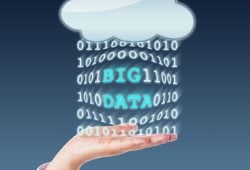The company focuses on using experiential marketing to connect customers after coming to a conclusion that traditional advertising is not as effective.
Raja Rajamannar, the company’s Chief Marketing & Communicating Officer and president of healthcare, stated as much in an interview with Mexico’s leading marketing magazine, Merca 2.0. In the interview, Rajamannar was able to outline Mastercard’s thinking about the future of marketing.
What’s the future of Marketing?
When asked what the future of Marketing looks like, Rajamannar explained that marketing is a lot like Physics. Physics has helped people understand how things work in the physical world, for example, electricity, gravity, magnetism, etcetera. While the classical definition for physics has worked perfectly for centuries, it later faced disruption. Today, technological advancements have enabled humans to look beyond the physical world. In the auto space, the classical definition of physics does not work anymore.
To look inside atoms, Max Planck discovered quantum physics, a new field of physics. Modern science and technology are based on Quantum Physics. So, when classical physics could no longer give answers, quantum physics was already giving solutions. This is pretty much what is happening to marketing today.
Marketing is undergoing a revolution
Due to advancement in technology, marketing has been disrupted at an unprecedented rate and is no longer what it used to be. There are 24 new technologies that are coming and each is set to disrupt marketing and influence its future.
Typically any big marketing disruption happens when two big technologies come — two big factors. For example, the shift from paradigm 3 to paradigm 4 was caused the entrance of:
Social media platforms
Mobile connected devices (smartphones)
This shift changed corporate marketing in the fourth paradigm and launched things like influencer marketing, social media marketing, mobile marketing, location-based marketing, and other forms of marketing.
Previous to that, it was the launch of the Internet and data analytics that shifted marketing from the second paradigm to the third.
Unlike in the two scenarios, today we have 24 technologies (not two) coming at us: AI, AR, VR, blockchains, NFTs, web three, 3D printing, Internet of Things, and wearables, among others. Each one of these is going to have a significant impact on marketing. However, the combination of the 24 is going to result in an unprecedented level of disruption.
Enter Quantum Marketing
Classical marketing is already failing pretty badly. A lot of theories we had in classical marketing were wrong and don’t fit in the the new paradigm. The strategies, frameworks that we had will not work in the new context and there is, therefore, a need to reimagine and reinvent marketing. That new way of marketing is what is now called quantum marketing.
Quantum marketing is to marketing, what quantum physics is to physics. This means rewriting all the rules of marketing right from things like how we do market research, what’s on the purchase funnel and how different it will it look like, how you do advertising, among others. On its part, advertising dead as we know it and loyalty has to be reinvented. So, every single aspect of marketing is going to change, and that’s what quantum marketing is all about.
The Quantum marketing approach is not something that’s going to happen in five years, we’re already seeing it, we are in the transition.
To what extent will technology disrupt marketing?
While advertising is not completely dead, it’s definitely being disrupted. The big question is, to what extent will marketing be disrupted?
Different countries are at different levels of evolution. Most businesses in Mexico, for example, are still doing performance marketing. Other businesses like Mastercard have some of their cutting edge developments right in the same city.
Advertising is not dead, it’s only dead as we know it. That means that advertising has been dramatically transformed. The need to communicate between brands and customers still exists. If, for example, you launch a new product, people have to know about it. That can only happen through advertising. How you engage the consumers and communicate with them will now change dramatically.
Currently, advertising agencies inhouse or third parties are involved in this communication. According to Quantum marketing, this advertising model must change.
The advertising model today is not sustainable. If you own an advertising media, and for instance, MasterCard pays you $100 for advertising, you will barely retain $40. That’s because there are intermediaries who have direct contact with Mastercard, and will pocket the $60. This level of fraud and kickbacks in the advertising ecosystem have made it unsustainable.
The U.S. Department of Justice is currently investigating the kickbacks between the media companies, the advertising agencies, the media agencies and the client. In the future, advertising is set to become real-time because it has to be contextually appropriate and relevant to you at that point and in your way of thinking and action.
Ads are viewed as an interruption
Currently, advertisements are viewed as a rude interruption by consumers who will quickly tap on ‘skip now” if this is on Youtube. But it takes 5 seconds to be able to skip an ad. Meanwhile, as a marketer, you have destroyed that viewer’s experience and to make matters worse, sometimes YouTube will show more than one ad at a time. So, what are consumers doing to deal with that? They are willing to pay YouTube an amount per month for ad-free experiences or sometime download content for offline experience. Viewers want beautiful and seamless experiences online.
Ironically, as marketers we talk about delighting consumers, creating seamless experiences and taking away friction from customer experience but we are doing the exact opposite of what we promise. Even reputable sites and magazines have small screens with a bunch of ads that tend to be annoying to visitors. This is the reason why 630 million people have now sort the services of ad-blockers while approximately 400 million people are switching to paid ad-free channels streaming services like Netflix or Amazon prime or YouTube.
That has created a situation where consumer attention has moved to placed harder to reach by marketers. There’s, therefore, a need to find alternate space and focus on it, and that means going back to the basics.
Marketers must create memorable experience for customers
If Mastercard, for example, creates an experience for its customers that’s truly memorable, they will love it. If they can only get this experience from MasterCard, subconsciously, a link forms in their mind between the positive experience and the fact that MasterCard enabled it especially for them. These customers will then go and brag about it on social media and other people will get interested in experiencing it too.
”The hypothesis that we started in 2013 is, if you curate enough number of experiences at scale and in an economically viable fashion and the fulfillment is flawless consumers will really be delighted with us,” says Rajamannar. So Mastercard shifted from advertising-led marketing to experience-led marketing called experiencial marketing.
Impact of Experiential marketing on Mastercard
The results of experiential marketing when done at scale is massive consumer engagement and positivity for the brand.
Because of this approach, Mastercard, 90 years later has observed positive achievements such as:
It’s one of the 12th most valuable brand in the worl It’s one of the top three, fastest growing brands in the world.
It’s also one of the most loved brands in the world.
Its audio brand is the world’s number one brand for three years in a row.










